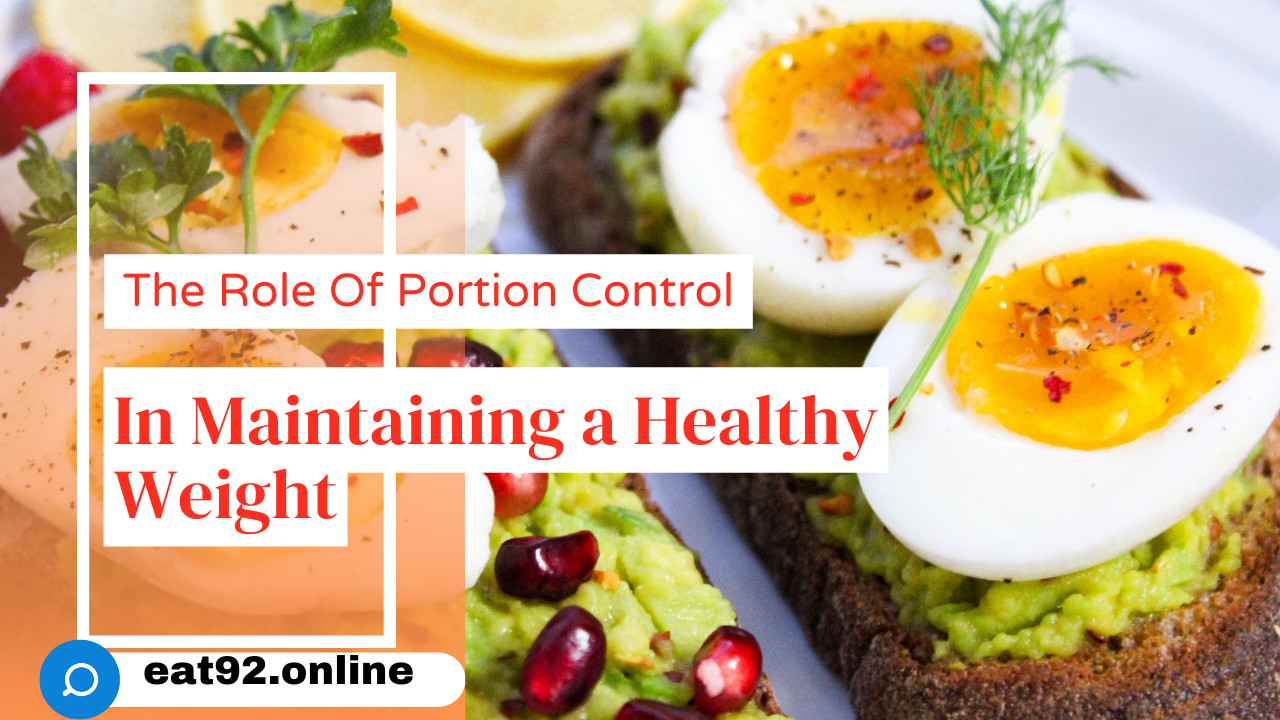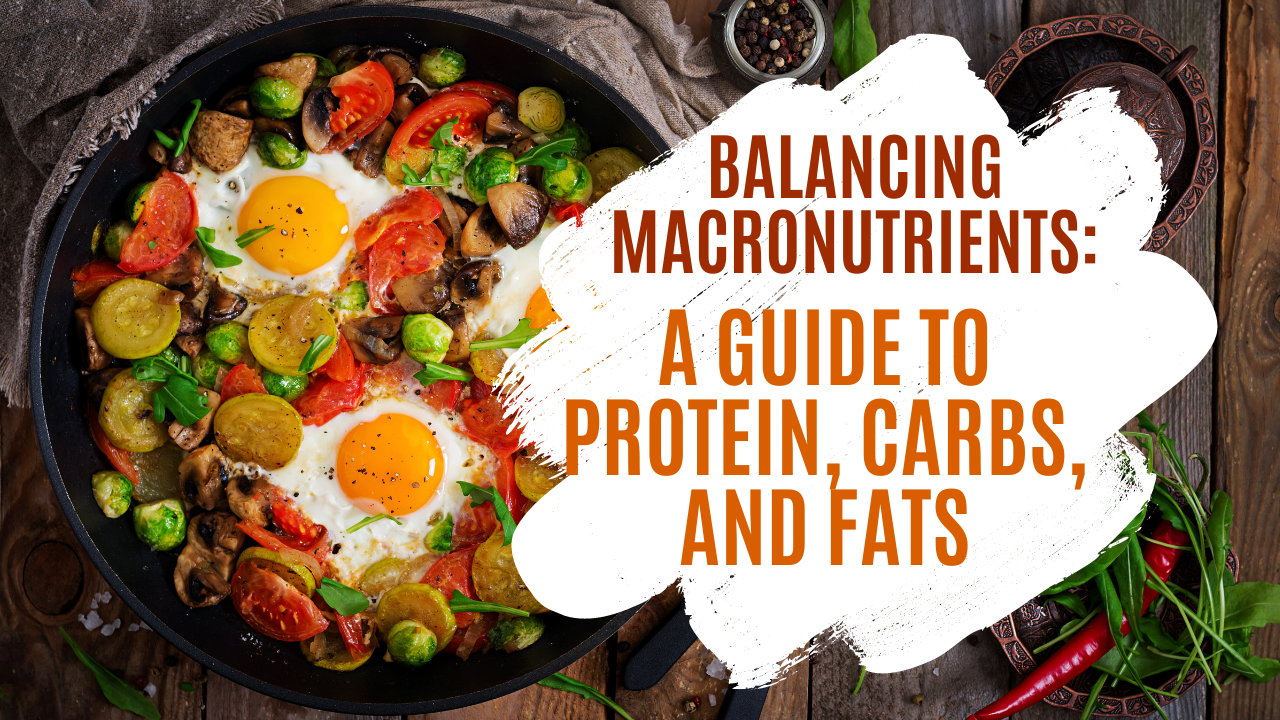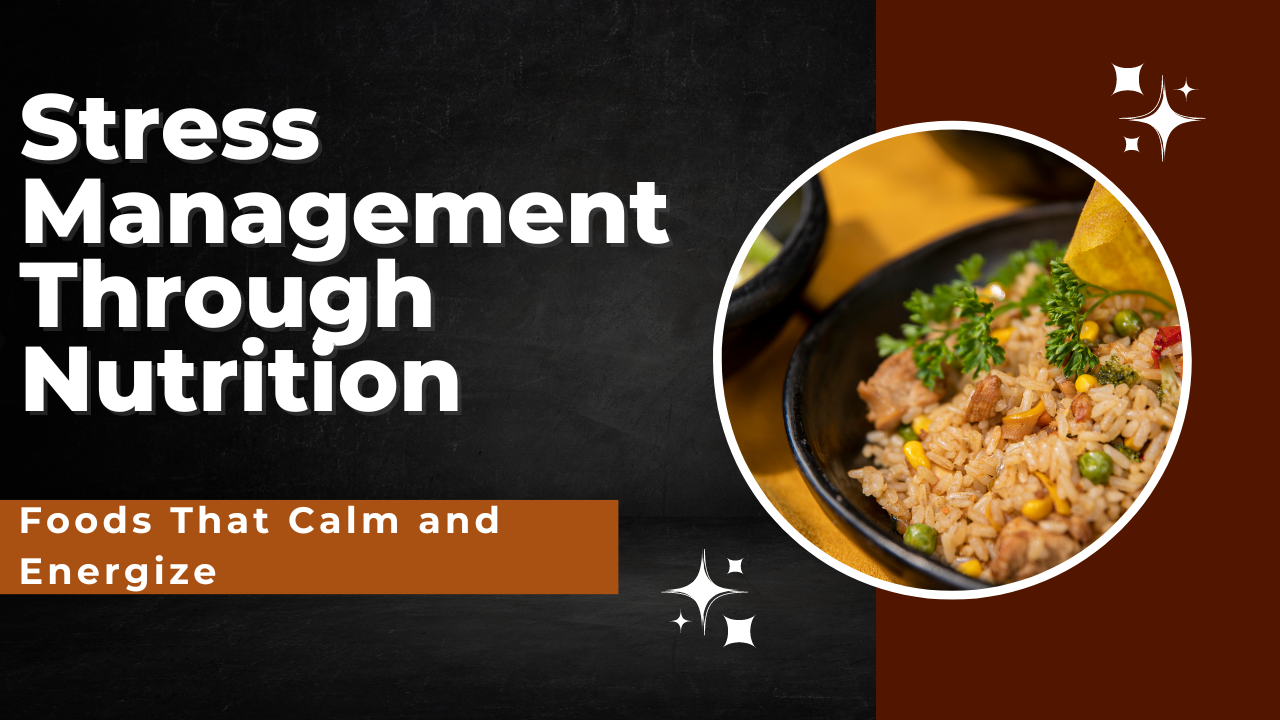The Role of Portion Control in Maintaining a Healthy Weight

Understanding portion control
Portion control is a practice that involves consciously managing the amount of food we consume during a meal or snack. It goes beyond counting calories and focuses on the size of our portions to ensure we are eating in the right quantities. By understanding portion control, we can make informed decisions about our food intake and maintain a healthy weight.
One key aspect of portion control is learning to recognize appropriate serving sizes. This can be challenging, as our perception of what constitutes a “normal” portion has been skewed by oversized portions served in restaurants and fast-food establishments. However, by familiarizing ourselves with recommended serving sizes for different food groups, we can begin to recalibrate our understanding of portion sizes.
Another aspect of portion control is being mindful of our eating habits. Mindful eating involves paying attention to our body’s hunger and fullness cues, as well as savoring each bite and enjoying the flavors and textures of our food. By eating mindfully, we can better gauge when we are satisfied and avoid overeating.
Finally, portion control also involves being aware of the nutritional content of our food. It’s not just about the quantity, but also the quality of what we eat. By choosing nutrient-dense foods and ensuring we have a balanced diet, we can optimize our health and maintain a healthy weight.
The importance of portion control for weight management
Portion control plays a vital role in weight management. When we consistently consume more calories than our bodies need, the excess energy is stored as fat, leading to weight gain. By controlling our portion sizes, we can create a calorie deficit that promotes weight loss or maintain a balanced calorie intake to sustain a healthy weight.
Research has shown that people tend to underestimate the number of calories they consume, particularly when faced with larger portion sizes. By practicing portion control, we can gain a better understanding of how many calories we are actually consuming, making it easier to make adjustments as needed.
Additionally, portion control helps regulate blood sugar levels. Large portions, especially those high in refined carbohydrates and sugars, can cause spikes in blood sugar levels, leading to crashes and cravings for more food. By moderating our portion sizes and choosing whole, unprocessed foods, we can stabilize our blood sugar levels and reduce the risk of developing chronic conditions such as diabetes.
Furthermore, portion control promotes mindful eating, which can foster a healthier relationship with food. When we pay attention to our portion sizes and eat mindfully, we become more attuned to our body’s signals of hunger and fullness. This awareness allows us to eat in response to our body’s needs rather than emotional or external triggers, leading to better overall eating habits and weight management.
The psychology behind portion control
Portion control goes beyond just physical actions; it also involves understanding the psychological factors that influence our eating habits. Our environment, emotions, and social cues all play a role in the portions we consume.
One psychological factor that affects portion control is the “clean plate” mentality. Many of us were raised with the idea that we should finish everything on our plate, regardless of our hunger level. This mindset can lead to overeating, as we feel compelled to eat everything in front of us, even if we are already satisfied. Breaking free from this mentality and listening to our body’s signals can help us practice portion control more effectively.
Another psychological aspect is the influence of external cues on our eating habits. For example, larger plates and bowls can trick our minds into thinking we need to fill them, resulting in larger portion sizes. By using smaller plates and bowls, we can visually manipulate our perception of portion sizes and consume less food without feeling deprived.
Social factors also play a role in portion control. When dining with others, we tend to mirror their eating habits and portion sizes. If those around us are indulging in large portions, we may feel inclined to do the same. Being mindful of these social influences and making conscious choices about our own portion sizes can help us maintain a healthy weight.
Understanding the psychology behind portion control allows us to address the underlying factors that contribute to overeating and make positive changes in our eating habits.
The benefits of practicing portion control
Practicing portion control offers numerous benefits beyond weight management. Here are some key advantages:
- Improved nutrient intake: By controlling portion sizes, we can ensure we are consuming a variety of nutrient-dense foods. This promotes overall health and well-being, as our bodies receive the essential vitamins, minerals, and antioxidants they need to function optimally.
- Reduced risk of chronic diseases: Overeating and consuming oversized portions have been linked to an increased risk of chronic conditions such as diabetes, heart disease, and obesity. By practicing portion control, we can reduce these risks and improve our long-term health outcomes.
- Enhanced digestion: Eating large portions can put a strain on our digestive system, leading to discomfort, bloating, and indigestion. By consuming appropriate portion sizes, we can support our digestive health and improve nutrient absorption.
- Greater energy levels: Overeating can leave us feeling sluggish and lethargic. By practicing portion control and fueling our bodies with the right amount of food, we can maintain steady energy levels throughout the day.
- Improved body image and self-esteem: Portion control can help us develop a healthier relationship with our bodies and food. By practicing mindful eating and maintaining a healthy weight, we can boost our self-esteem and body image.
The benefits of practicing portion control extend far beyond weight management alone, making it a valuable habit to incorporate into our daily lives.
Tips for practicing portion control
Implementing portion control into our daily lives can seem challenging at first, but with a few simple strategies, it becomes much easier. Here are some tips to help you get started:
- Measure your food: Use measuring cups, spoons, or a food scale to accurately portion out your meals and snacks. This will give you a better understanding of appropriate serving sizes and help you avoid overeating.
- Use smaller plates and bowls: Switching to smaller dishware can make your portions appear larger, tricking your mind into feeling satisfied with less food. This visual illusion can be a powerful tool in controlling portion sizes.
- Fill half your plate with vegetables: Vegetables are low in calories but high in nutrients and fiber. By filling half your plate with vegetables, you can naturally reduce the portions of higher-calorie foods while still feeling satisfied.
- Listen to your body’s hunger and fullness cues: Pay attention to how hungry or full you feel before, during, and after a meal. Eat slowly and stop eating when you are comfortably satisfied, rather than overly full.
- Plan your meals and snacks ahead of time: Having a meal plan and pre-portioned snacks can help you make healthier choices and avoid mindless eating. When you have pre-planned portions, you are less likely to overindulge.
- Practice mindful eating: Slow down, savor each bite, and be present in the moment while eating. This allows you to fully enjoy your food and be more attuned to your body’s signals of hunger and fullness.
- Keep unhealthy foods out of sight: If you have tempting foods readily available, you are more likely to eat larger portions. Keep unhealthy snacks out of sight and stock your pantry with healthier options.
By implementing these tips and strategies, you can successfully incorporate portion control into your lifestyle and reap the benefits it offers.
Portion control tools and resources
To support your portion control efforts, there are various tools and resources available. Here are a few worth considering:
- Portion control plates: These plates are designed with portion guides to help you visualize appropriate serving sizes for different food groups.
- Portion control containers: These containers are pre-portioned to hold specific food groups, making it easier to plan and prepare meals in advance.
- Food scales: A food scale allows you to weigh your food accurately, ensuring you are consuming the right portions.
- Smartphone apps: There are several smartphone apps available that can help you track your food intake, count calories, and monitor portion sizes.
- Online resources: Numerous websites and blogs offer portion control guides, meal plans, and recipes to support your journey towards healthier eating habits.
Remember, these tools and resources are meant to assist you, but they are not essential. Portion control can be achieved without them by simply being mindful of your eating habits and practicing portion control techniques consistently.
Portion control and meal planning
Meal planning is a powerful tool in practicing portion control. By pre-planning your meals and snacks, you can ensure you have appropriate portion sizes and make healthier choices. Here’s how to incorporate portion control into your meal-planning routine:
- Start with a balanced plate: When creating your meals, aim for a balance of protein, carbohydrates, and vegetables. Visualize your plate and allocate appropriate portion sizes for each food group.
- Use a food diary: Keeping a food diary can help you track your daily food intake, and portion sizes, and identify any areas where you may need to make adjustments.
- Prepare meals in advance: By cooking and portioning out your meals ahead of time, you can avoid the temptation to overeat or make unhealthy choices when you’re pressed for time.
- Choose nutrient-dense foods: Opt for foods that are high in nutrients but relatively low in calories. This allows you to consume larger portions while still maintaining a balanced calorie intake.
- Be mindful of snacks: Plan your snacks ahead of time and portion them into individual servings. This will help you avoid mindless snacking and control your overall calorie intake.
By incorporating portion control into your meal planning routine, you can set yourself up for success in maintaining a healthy weight and making nutritious choices.
Portion control for dining out
Dining out can present challenges when it comes to portion control, as restaurants often serve larger portions than we need. However, with a few strategies in mind, you can still enjoy eating out while practicing portion control:
- Share a meal: Splitting a meal with a dining partner allows you to enjoy the restaurant experience while keeping portion sizes in check.
- Order an appetizer or side dish as your main course: Many appetizers and side dishes come in smaller portions, making them a suitable choice for a main course.
- Ask for a to-go box in advance: When your meal arrives, immediately portion out half of it into a to-go box. This reduces the temptation to overeat and provides you with a portion-controlled meal for later.
- Choose healthier options: Opt for dishes that are lower in calories and higher in nutrients, such as salads, grilled proteins, and steamed vegetables.
- Be mindful of liquid calories: Alcoholic beverages and sugary drinks can contribute a significant amount of calories to your meal. Stick to water, unsweetened tea, or other low-calorie options to keep your overall calorie intake in check.
Remember, dining out should be an enjoyable experience, and practicing portion control does not mean you have to deprive yourself. By making conscious choices and being mindful of your portion sizes, you can still savor the flavors and social aspects of dining out while maintaining a healthy weight.
Common misconceptions about portion control
There are several misconceptions surrounding portion control that can hinder our ability to practice it effectively. Let’s debunk some of these myths:
- Portion control means deprivation: Portion control is not about depriving yourself of the foods you love. It’s about finding a balance between enjoying your favorite foods and nourishing your body with appropriate portions.
- You can only eat small portions: Portion control does not mean you can only eat tiny amounts of food. It’s about consuming the right amounts for your body’s needs and listening to your hunger and fullness cues.
- All calories are created equal: While calories are an important factor in weight management, the quality of the calories matters too. Nutrient-dense foods provide more satiety and nourishment than empty-calorie foods, allowing you to eat larger portions while still maintaining a healthy weight.
- Portion control is a temporary fix: Portion control is a lifelong habit that supports overall health and well-being. It’s not a quick-fix solution but rather a sustainable approach to maintaining a healthy weight.
By understanding and dispelling these misconceptions, we can embrace portion control as a positive and empowering tool for our overall wellness.
Conclusion and final thoughts
Portion control plays a crucial role in maintaining a healthy weight and supporting overall health and well-being. By practicing portion control, we can strike a balance between enjoying the foods we love and nourishing our bodies effectively. It goes beyond simply limiting calories and promotes mindful eating, helping us develop a better understanding of our body’s needs and preventing overindulgence.
By understanding portion sizes, being mindful of our eating habits, and paying attention to the psychological factors that influence our portion sizes, we can make healthier choices and avoid mindless overeating. Portion control offers numerous benefits, including improved nutrient intake, reduced risk of chronic diseases, enhanced digestion, greater energy levels, and improved body image and self-esteem.
Incorporating portion control into our daily lives may seem challenging initially, but with the right strategies and mindset, it becomes a sustainable and empowering habit. By measuring food, using smaller plates, listening to our body’s hunger and fullness cues, planning meals, and being mindful of our snacks, we can successfully practice portion control.
There are also various tools and resources available to support our portion control efforts, such as portion control plates, containers, food scales, smartphone apps, and online resources. These tools can be helpful but are not essential to practicing portion control effectively.
When dining out, we can still enjoy the experience while practicing portion control by sharing a meal, ordering appetizers or side dishes as main courses, asking for a to-go box in advance, choosing healthier options, and being mindful of liquid calories.
It’s important to debunk common misconceptions about portion control, such as the idea that it means deprivation or that all calories are equal. Portion control is a lifelong habit that supports our overall health and well-being, allowing us to find a balance between enjoying our favorite foods and nourishing our bodies appropriately.
By embracing portion control, we can take control of our portions and take control of our health. It’s a powerful tool that empowers us to make healthier choices, maintain a healthy weight, and support our long-term well-being. Let’s prioritize portion control and discover the transformative impact it can have on our lives.




